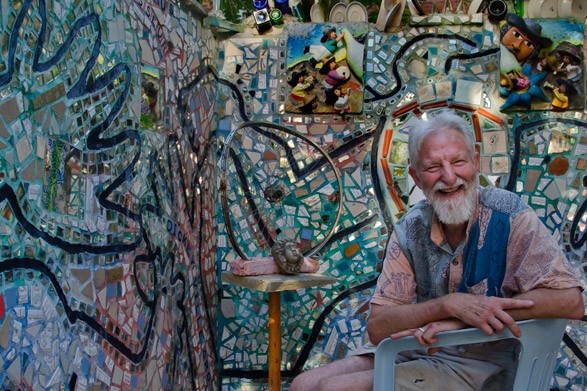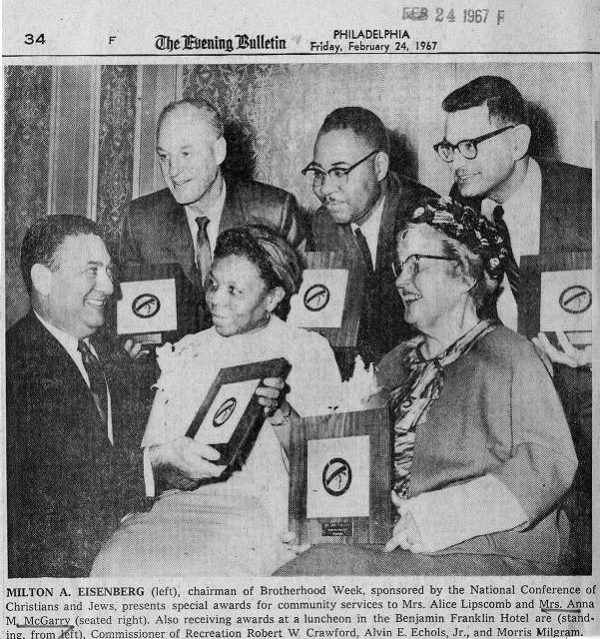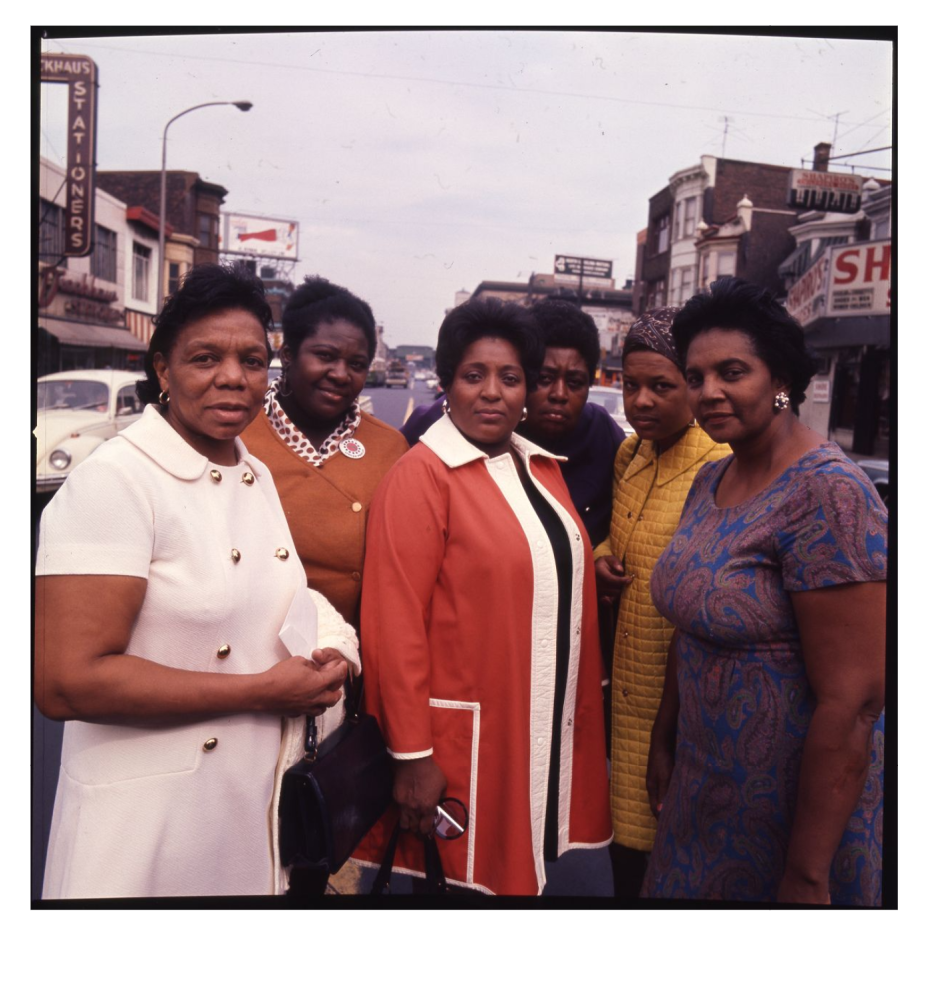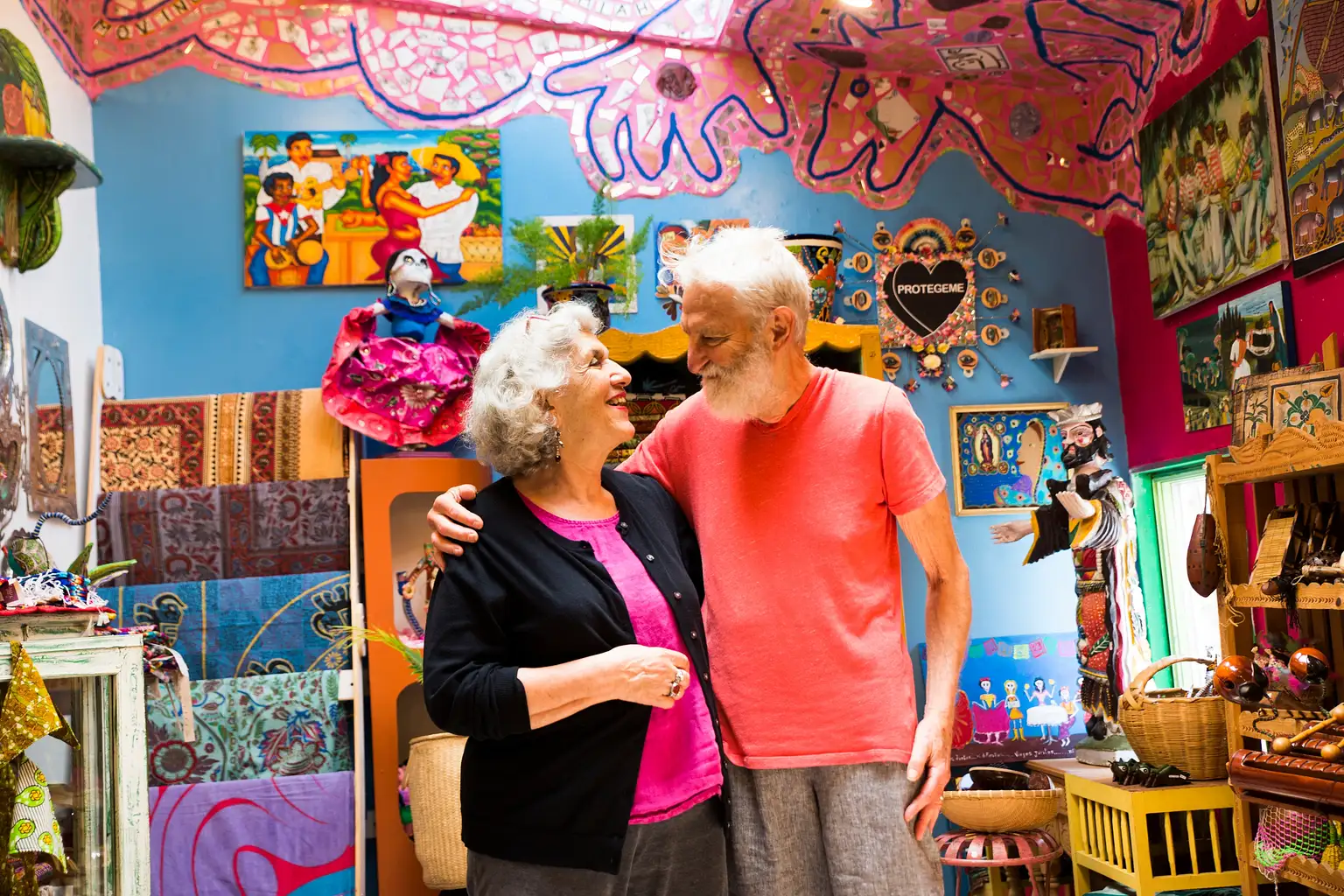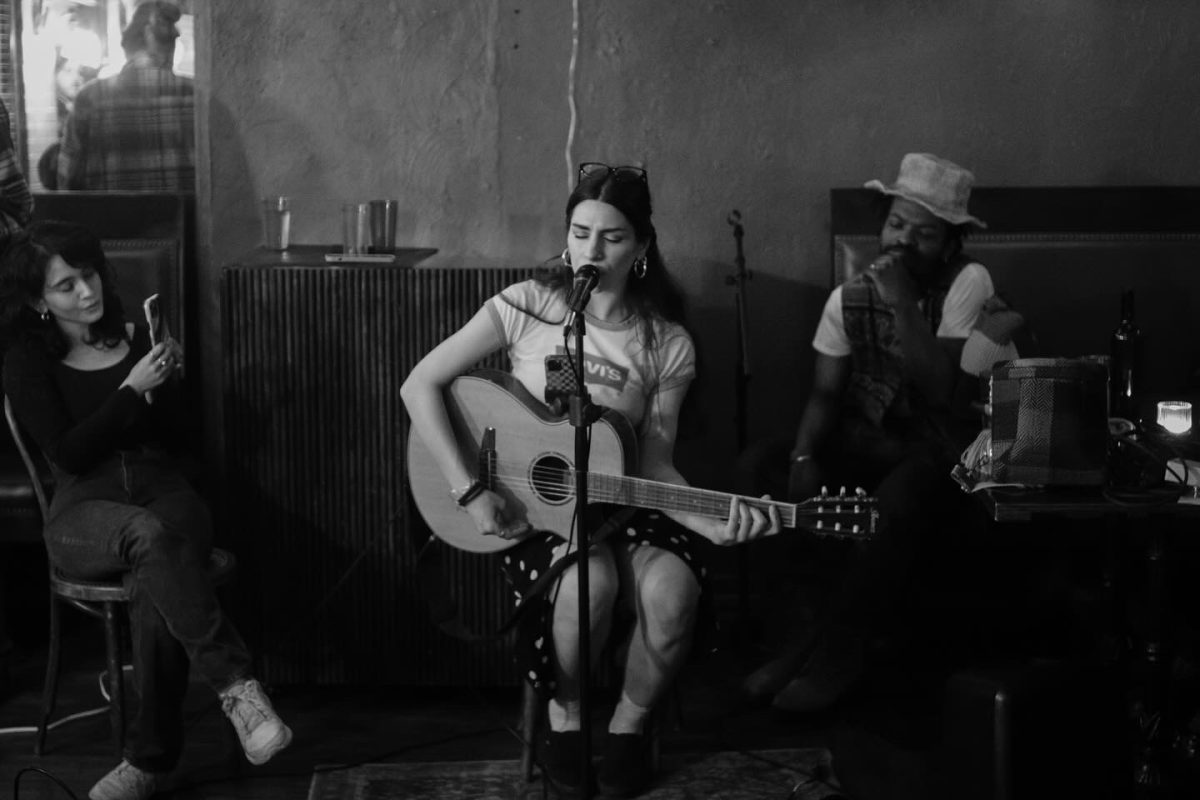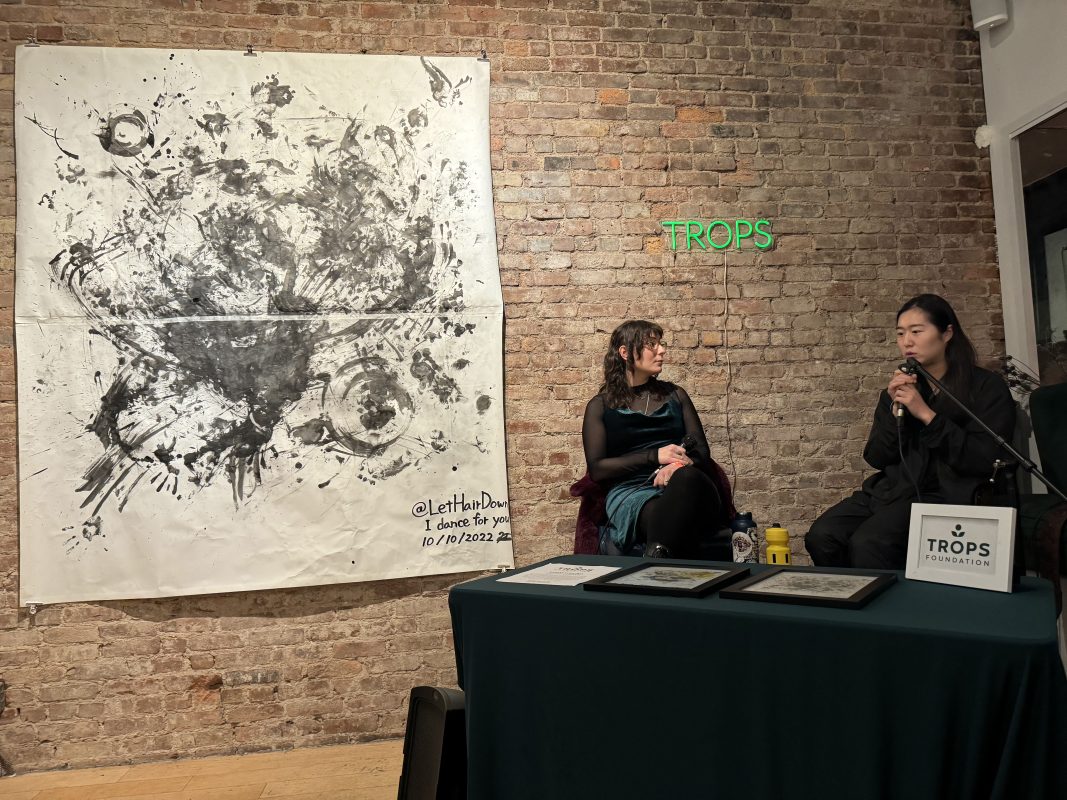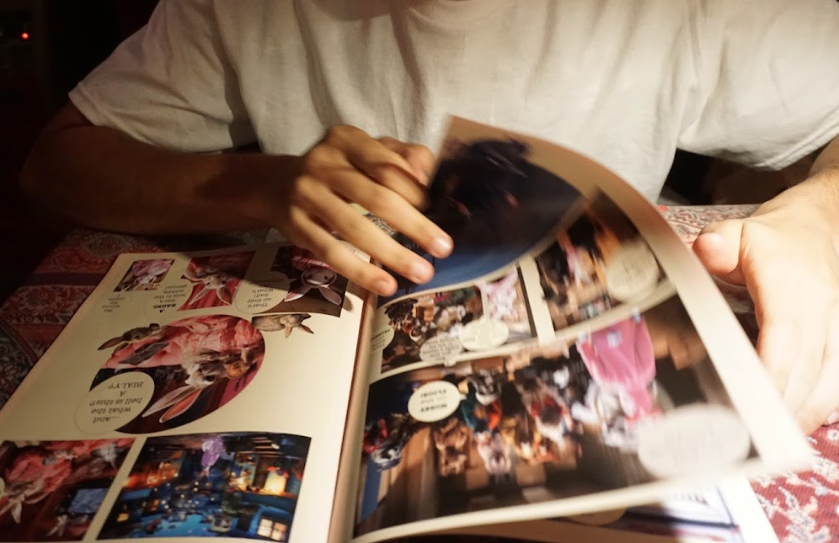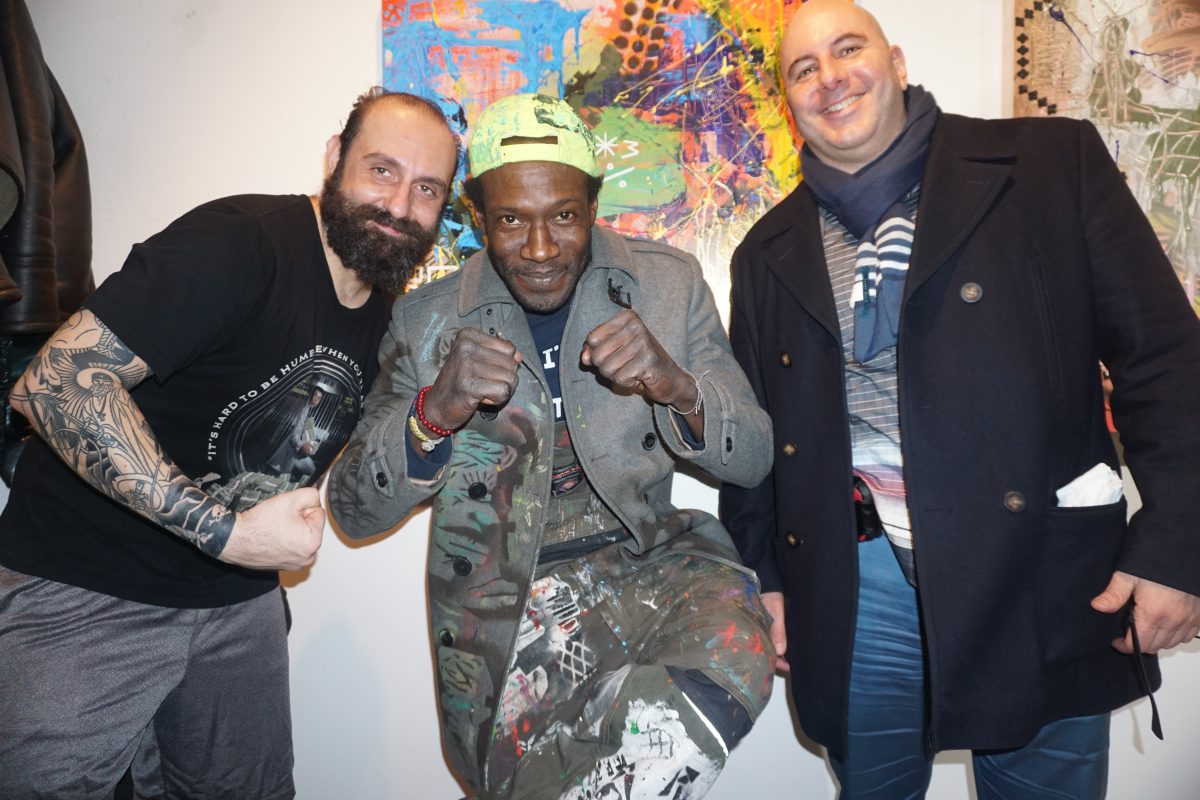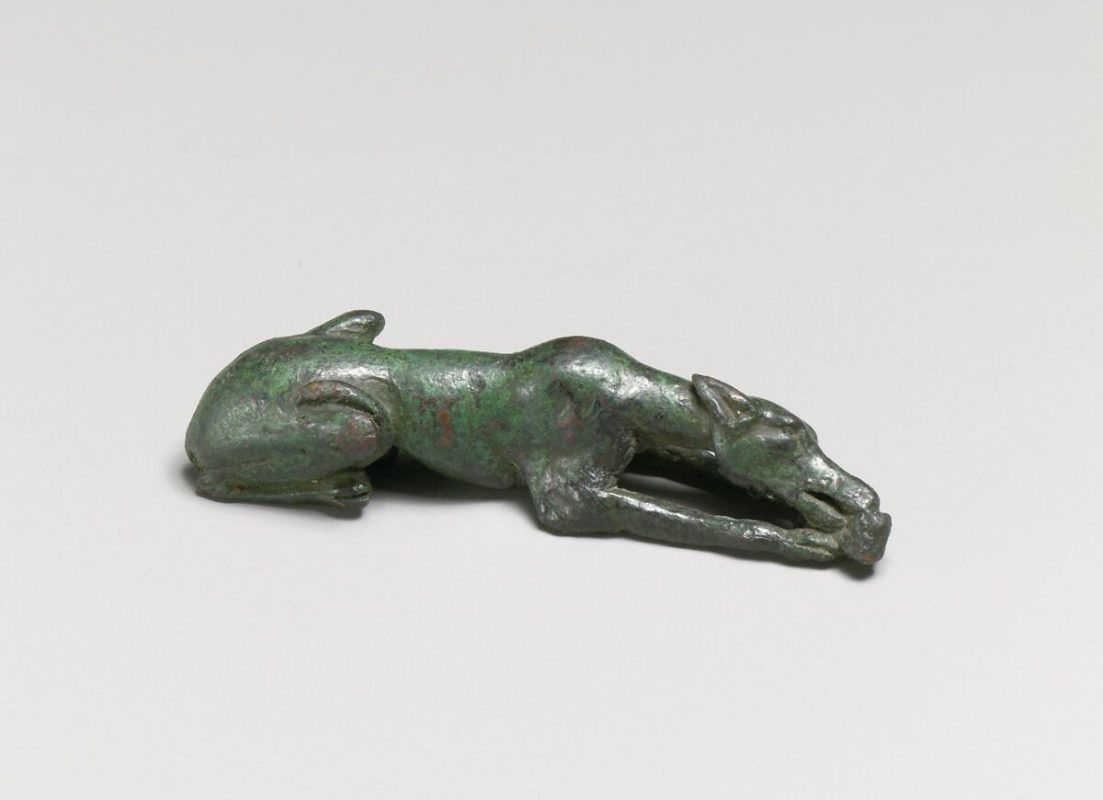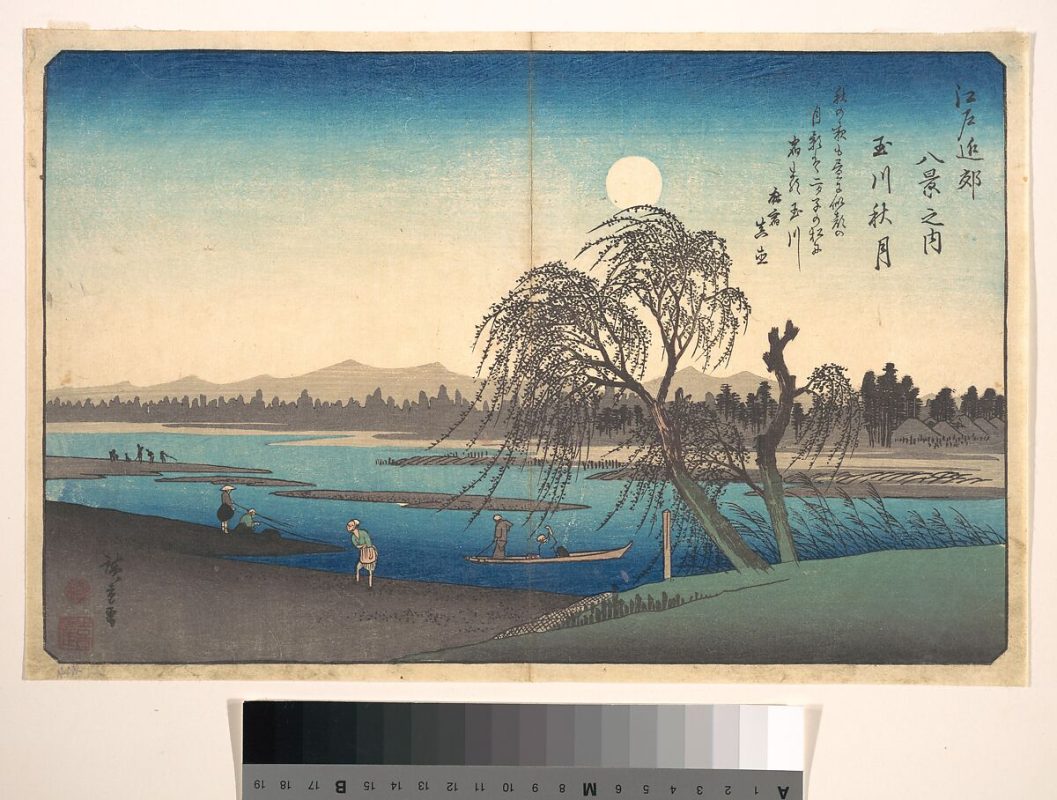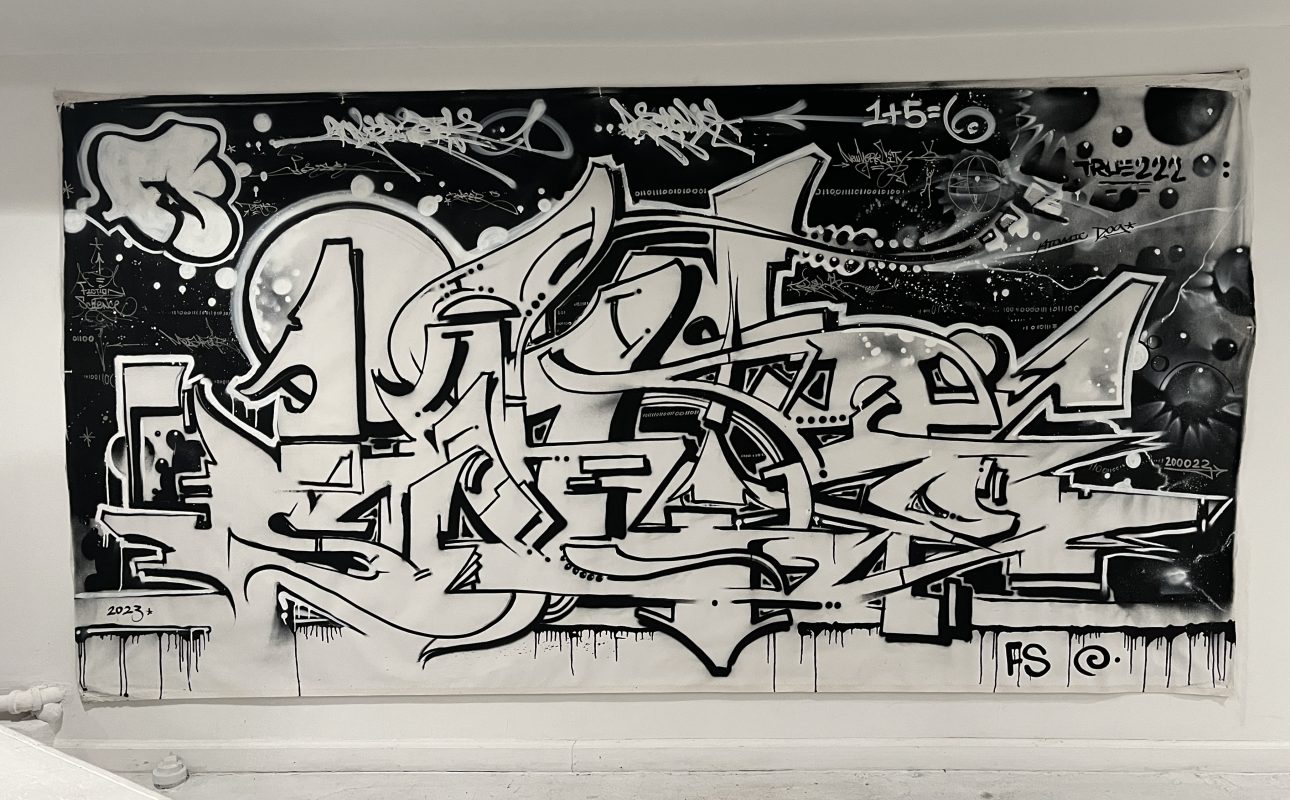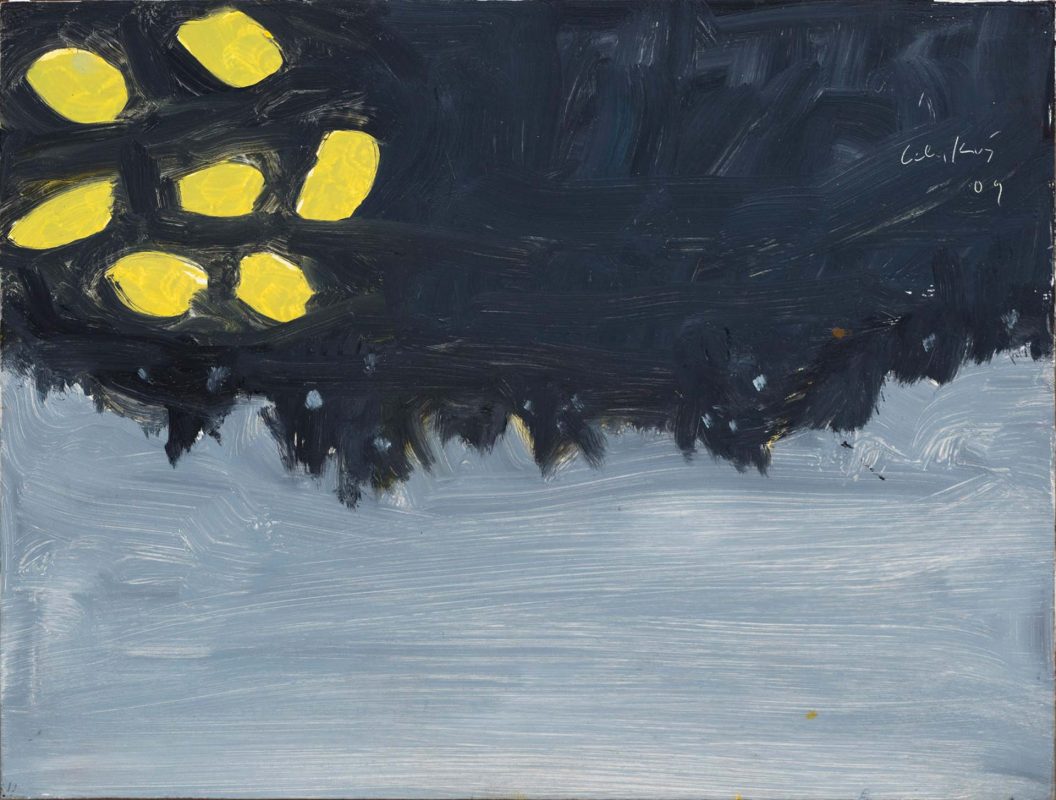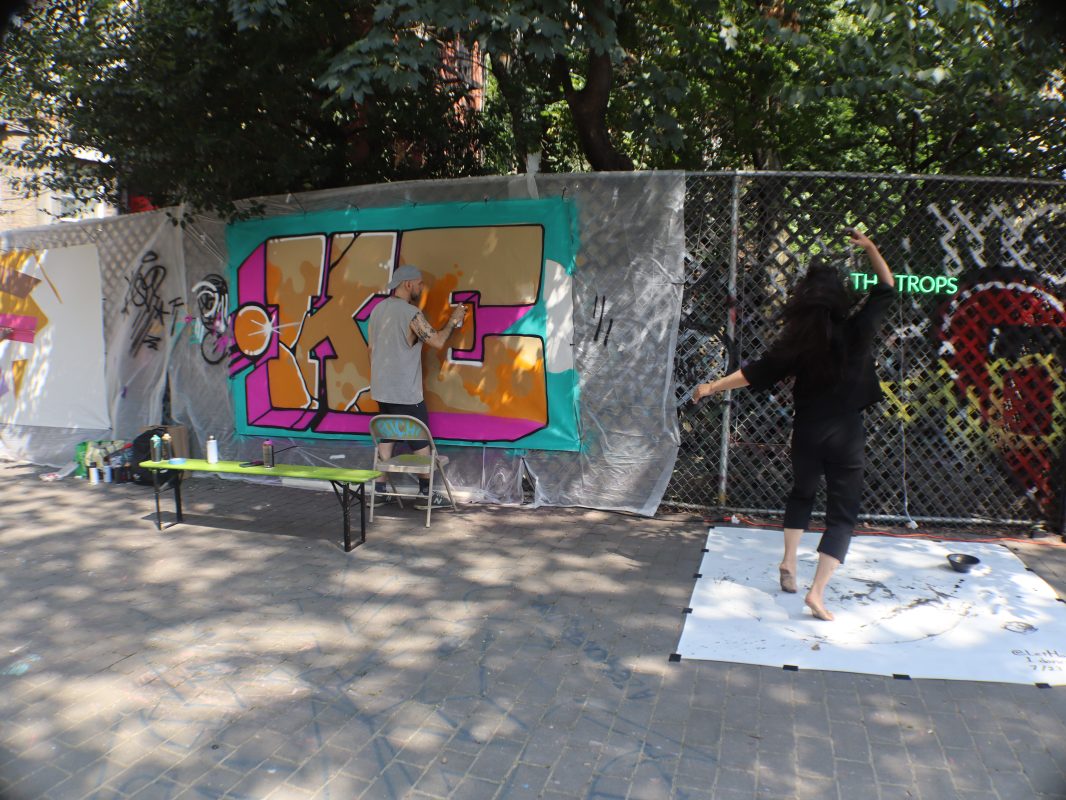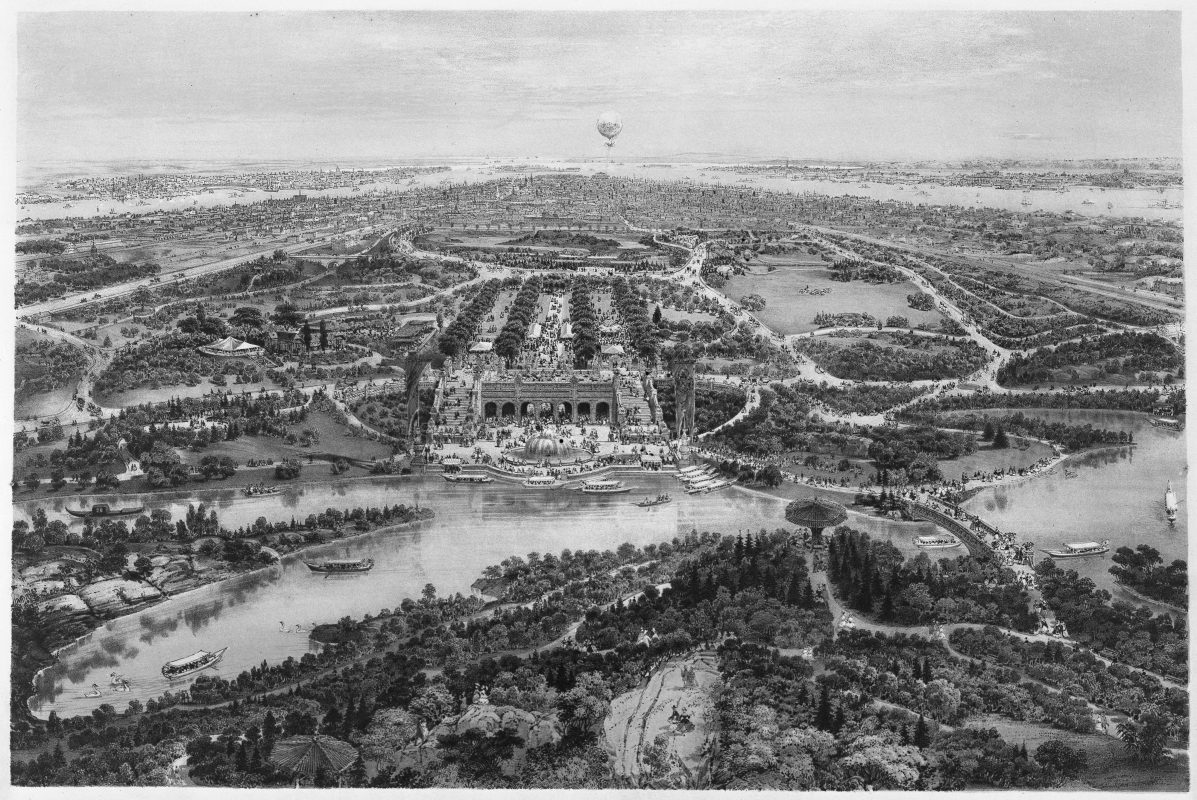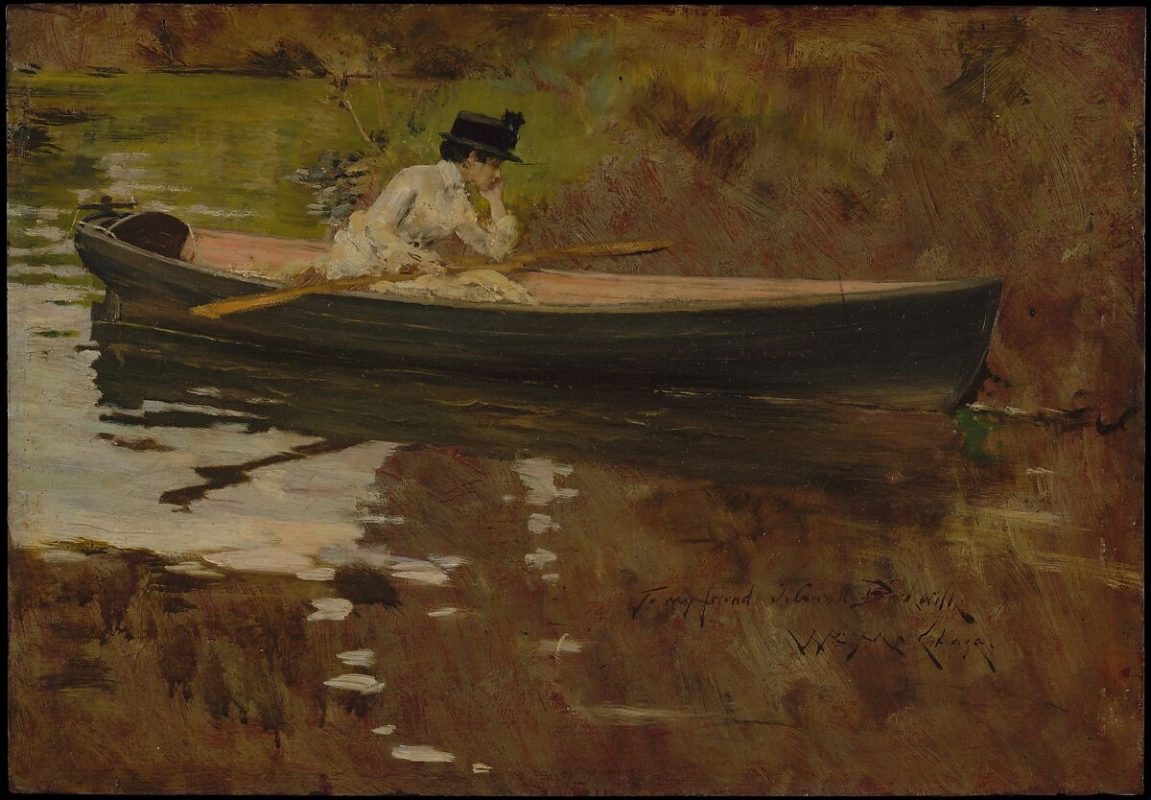Isaiah Zagar, the artist behind Philadelphia's Magic Gardens
Looking up at the wall, the story in its entirety stares back at you. One by one, each mosaic tile is meticulously placed, revealing an intimately personal construction. Its scale speaks to the energy behind it. Your eyes begin to section off the piece, finding little details, and discovering pieces of the puzzle. Cool tones come together in harmony and mirrored tiles shine out. Figures take shape and reveal expressive faces and phrases. It's full of life. Facing outwardly and reflectively to the buzzing streets. Isaiah Zagar captures Philly in his murals and regifts it back to the city.
Zagar's best-known work, Philadelphia's Magic Gardens, is a beloved gem located on South Street's Headhouse District. The Magic Gardens is an interactive art exhibit featuring a maze with mosaic walls bursting with color and texture. Walls of found and repurposed objects like glass bottles, bicycle parts, and ceramic dishes cluster together and create a whimsical wonderland for you to get lost in. The unique style and bewitching energy attracts Philadelphians and tourists alike to explore the South Street area, which is where most of Zagar's work is concentrated.
Since he came to Philadelphia, Zagar's work has breathed vitality into South Street. The value of his contributions and the powerful potential of public art as a whole can be demonstrated through South Street's history, providing us with a case study on public art's impact and relationship with community.
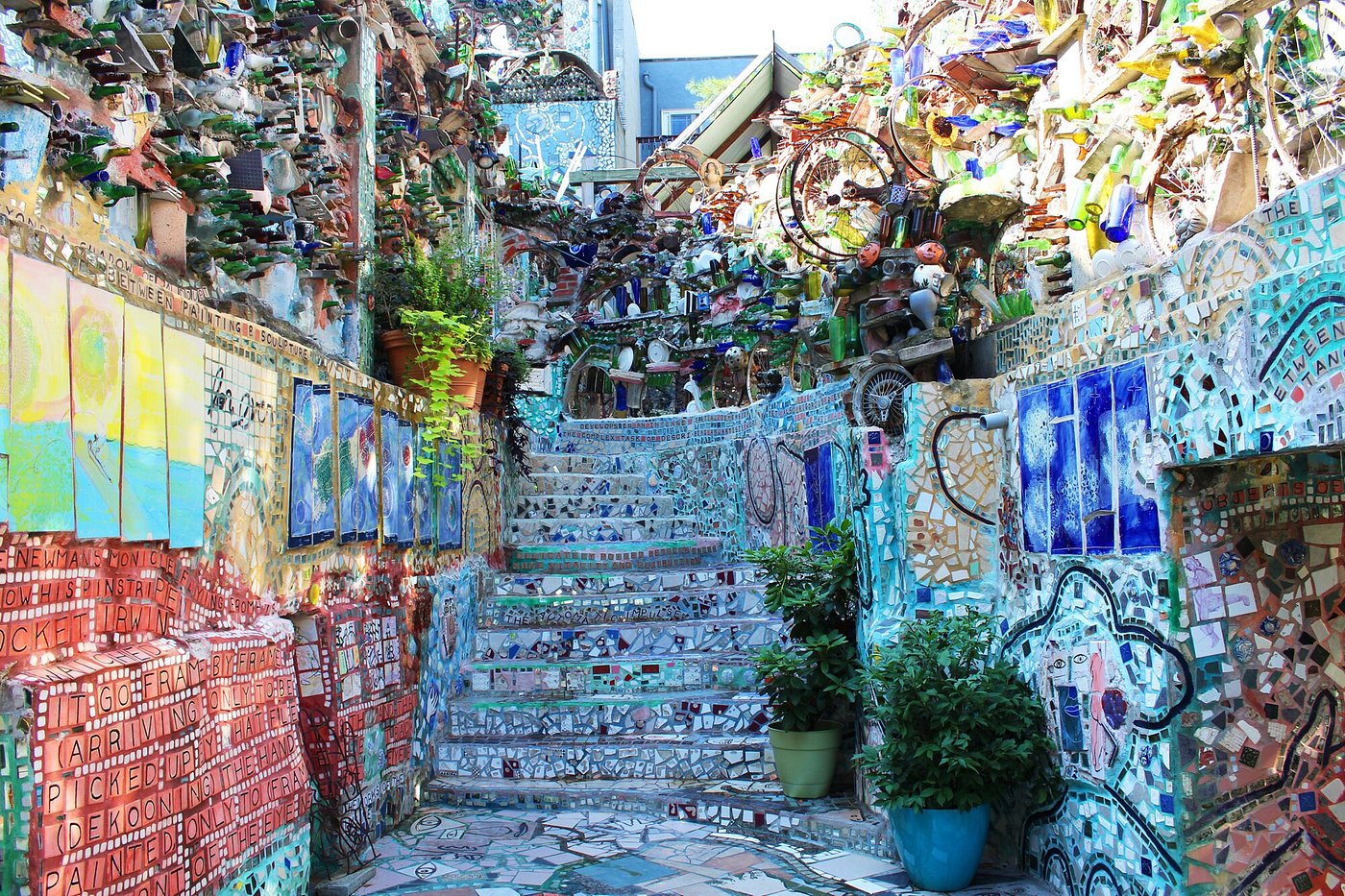
Philadelphia's Magic Gardens
South Street’s influential origins date back to several immigrant communities who first called it home. It is a long-held tradition that South Street is a designated spot to seek entertainment and eclectic experiences. Originally, it was not a part of the Philadelphia city limits. Live music was not allowed by the Quaker doctrine, so South Street, being on the outskirts, is where live music lived. The depth of this energy can be felt reverberating through the streets and is captured exquisitely through Zagar's works, which are peppered throughout the area. You can find the sweeping murals on street-facing building exteriors, or tucked into alleys, inviting you to explore where you are. Catching a glimpse of the first mural, then the second, and you're suddenly searching for more. Your eyes are enticed to take in your surroundings, consciously seeking beauty.
Perusing the neighborhoods of Philadelphia becomes a familiar and energizing pastime. Every block seemingly breeds a new feeling. From Rittenhouse to Old City, from the Gayborhood to South Street; they’re all Philly, uniting in their undercurrents. Grit, ambition, and a vibrant community bond everyone. Each neighborhood connects in close proximity, making a large, urban city feel breezy and quaint. But there was a time when visions of redevelopment and suburban convenience sought to change the city.
First proposed in 1964 by the Philadelphia City Planning Commission, the Crosstown Expressway was a highway expansion that would disrupt this cultural unification by dividing the area by race and income. When the Crosstown Expressway was proposed, South Street was struggling. It was seen as a less desirable area to live in, thus contributing to the campaign for highway expansion. With low-cost property available, bohemians, artists, musicians, and hippies began moving in, including the Isaiah Zagar and his wife, Julia, who moved to South Street in the 60s. As Isaiah began constructing his public artwork, the Zagars effectively joined The South Street Renaissance. Whether they knew it or not, this move was an act of rebellion.
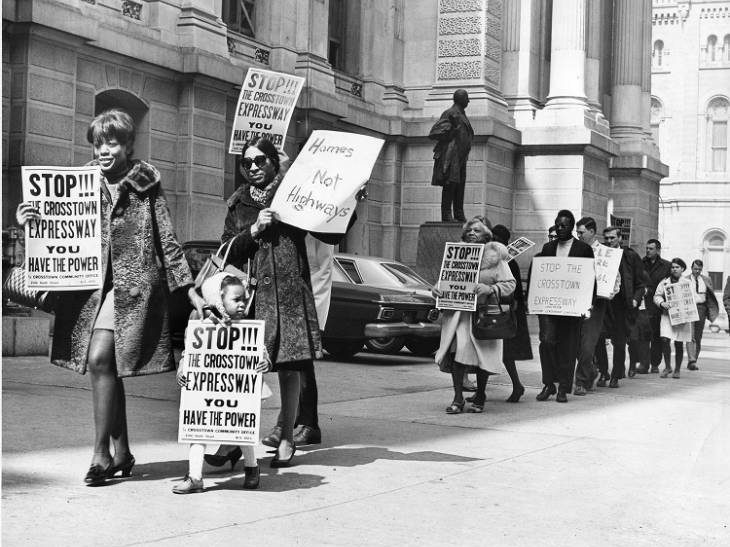
A CCPDCC protest
Soon, the Zagars called on their protesting skills learned in the Peace Corps and fought alongside their neighbors. Culture and art began taking over as they all came together to repair the neighborhood. As they thrust life back into South Street and other neighborhoods joined in the fight, the City Planning Commission was no match for the Philadelphian spirit. Through artistic visions and united voices, South Street was spared, allowing us to continue treasuring it today. Zagar, amongst many, was a part of the effort to protect South Street and the surrounding communities.
Community organizing was key, namely the Citizens’ Committee to Preserve and Develop the Crosstown Community (CCPDCC). The CCPDCC was created in 1968 by housing activist Alice Lipscomb, community leader George Dukes, and lawyer Robert Sugarman. Alice Lipscomb was an esteemed African American organizer, passionate about her community and its citizens. Fearless and committed, she united groups to fight against slumlords and racist housing policies.
The CCPDCC partnered with a supportive local architectural firm to convince the city South Street was salvageable with new land use plans drawn up as their rebuttal. The new plans were a contentious debate between the CCPDCC and government leaders for years, until Lipscomb broke through to newly elected mayor Frank Rizzo in 1972. Their agreement included scrapping the Crosstown Expressway, rehabilitating low-income housing, reducing household relocation, and supporting local businesses, with additional planning to be directed by the community.
Lipscomb's work prevented the decimation of vibrant South Street, rallying citizens to protest alongside her. Her tireless labors of love for Philadelphia inspired Isaiah Zagar to create a sweeping, grand-scale mural in honor of this local hero in 2003 on S Sartain St. His signature style is immediately evident, as is his admiration and respect for Lipscomb. Capturing Lipscomb's essence through abstract figures and larger than life depictions, this mural amplifies Zagar's impressive body of work. It is another love letter to South Street.
Zagar's work has continued to grow since South Street was salvaged, serving as a testament to what could have been lost. The Magic Gardens was completed in the 90's and has been a cherished part of the locale since. It's hard to imagine Center City with a major highway plunged through it. Thanks to the hard work for Alice Lipscomb and Isaiah Zagar and others who fought alongside them, it remains intact and vibrant. One Philadelphia stroll is enough to know why the South Street Renaissance fought this threat.
Isaiah and Julia Zagar

